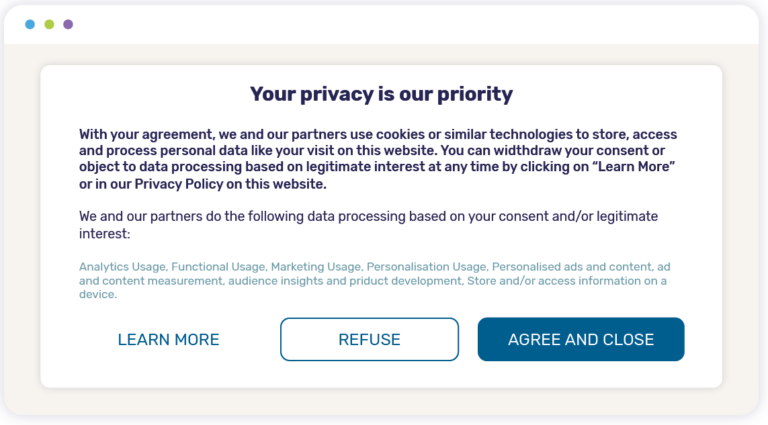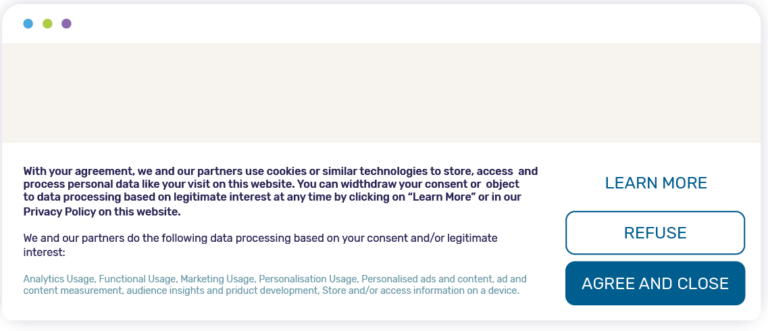With today’s increasing regulatory expectations from Data Protection Authorities, publishers are now facing new challenges regarding the user consent of their audience. Maximizing monetization in a context where consumers are given more choices regarding their data can be tricky. This spotlights the importance of having a great conversion rate when it comes to the Publishers’ CMPs. Limiting the number of ad calls without consent can directly be correlated to improving ad revenue.
In partnership with Didomi, we have conducted a study to understand how publishers can optimize their CMPs to get the best possible conversion rates and reduce the number of ad calls with refused consent. Publishers can play with the key design elements of a CMP – its title, or even its format – to reduce the opt-out rate. To come up with the following figures, Didomi pursued a study that looked at 40M page views. Their goal was to identify conversion trends to highlight the most effective ways to optimize CMPs.
Some CMPs today still do not have a title although it is one of the most effective ways to drastically improve the conversion rate. CMPs with no titles struggle to get more than a 35% consent rate, and the study has shown that having an explanatory title can multiply the consent rate by 3. One thing Publishers can be sure of is that the text won’t be read, the only part that can catch the user’s attention is the title, which makes it a valuable opportunity to reassure the user in regards to the reason why you want to collect his data. Some attractive titles like “Your Privacy Is Our Priority”, “We Love Cookies” or “We Are Here To Protect Your Privacy” have proven to be game-changing for Publishers.
There is also much to be done by publishers regarding the format of their CMPs. Most of the CMPs’ formats today are either Pop-in or a banner. The study has shown that the pop-in format is by far the most effective in comparison to the banner format. While the conversion rates of pop-in formats are between 90% and 98%, the banner formats are, on average, much lower with only 60% to 75% opt-in rate. The main difference between the two formats is that in one case, Publishers are allowing users to access content even before they have given their consent, and on the other hand they are asking the users for it before they can even access the content.


There are some additional optimizations that can be brought to the CMPs, on the buttons, and the look & feel level for example. To go over all the possible optimizations and since reducing the number of ad calls with no consent is only a first step to maximize monetization, we have developed at Pubstack a free guide to help Publishers maximize their monetization while respecting user choice. It is available for download here.
If you want to dive deeper into the impacts of identity on your activity as a publisher, Pubstack has partnered up with Didomi and ID5 to produce a 25-minute webinar dedicated to this specific topic. Click here to watch a thorough analysis of the impact of identity providers on publishers’ advertising revenues.
Now that you know how to optimise your CMP, all that is left for you to learn is how to handle your consentless traffic. While this topic is fairly exclusive to the French market due to the “Refuse All” cookie button regulations, Pubstack faced this exact challenge with M6 who wanted to monetise their consentless traffic without resorting to a paywall or cookie wall.